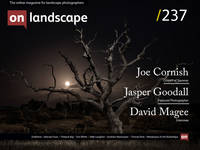Man's influence on the landscape

Mike Langford
Mike Langford is a Professional Photographer of some forty years, having worked photographing for books on China, Japan and North and South Korea, Australia and New Zealand. He spent fourteen years working as a photographer for the Australian Geographic before returning home to New Zealand in 2004.
Both he and his photographer wife Jackie Ranken, live in a small town in the middle of the South of the South Island of New Zealand named Twizel, from where together they run photographic workshops in and around the South Island of New Zealand.
I have always been a big fan of photography books, so it was no surprise that not long after graduating from photography school in 1981, I was asked to work on my first international book on China with the writer Han Su Yin in 1985, this was quickly followed by a book on North and South Korea in 1987 (still the only photography book on the two countries as far as I know), followed by a book on the four seasons of Japan in 1990.
The idea of working in a book form as opposed to just working on photography features with magazines, (which is also something I have done for most of my photographic career), means you can really get your teeth into a subject, sometimes spending months at a time continually working on the one project.
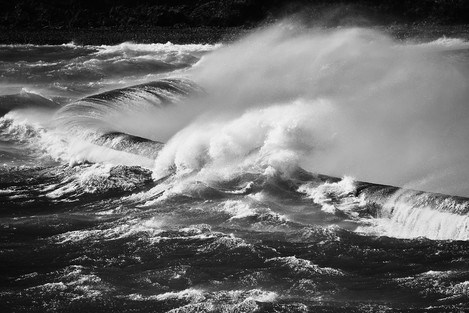
Waitaki Dam Wall
This was taken looking towards the top of the Waitaki Dam during a howling nor-westerly wind, which gets funnelled through the valley from the Southern Alps. The curvature of the top of the dam wall created a great graphic curve within the frame.
Canon 5D Mark IV, Canon EF 100-400mm f/4.5-5.6 L IS II USM @ 400mm
1/1000 sec, f/8, ISO 200
The result is that you get to produce a body of work that is visually cohesive both in its narrative as well as its visual style. Back before digital, working with Kodachrome 64, we purchased a batch of film that guaranteed every frame used in the book had the same feel to it in terms of colour balance, contrast and grain.
The idea of a visual continuity in the book form has continued right through my career and is still evident in my latest series of smaller self-published books, supporting my desire to create a visual cohesiveness within the context of a book.
It's never just a subject that ties the work together, it's also the visual style you choose to use that does it. The choice to use colour, (either loud or quiet) or monochrome, (either hard or soft), is initially dictated by the subject and how you feel about it.
It is never just that simple either, as the stylistic decisions you need to decide on also involves the graphic design of the book as well script and typeface used. As visual communicators, it's our task to have at least an opinion about these things. If you can't do these things yourself then you need to work with a graphic designer you have empathy with who can listen to you and understand your aesthetic.
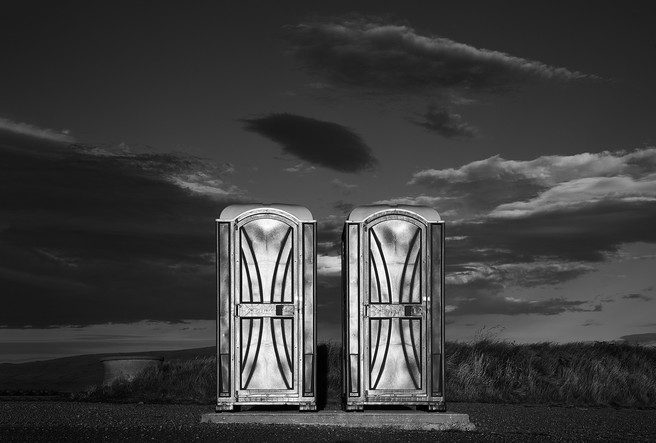
New Toilets
A late afternoon visit to the end of the Tekapo-Pukaki canal, revealed two spanking new toilets that looked like a couple of alien space craft had just landed. Maybe there was a doctor inside one? It was just a matter of waiting until the angle of the sun reflected off both doors to make the shot take off.
Canon 5D Mark IV, Canon EF 24-105mm f/4 IS II USM @ 56mm
1/160sec, f/11, ISO 100
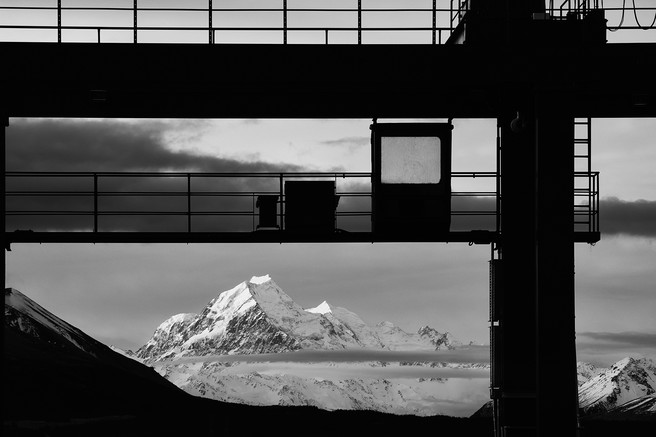
Mt Cook from Ohau B Power Station
Having previously photographed Mt Cook from all around the Mackenzie Basin, I found it very refreshing to find and make this photo of it in a way I had never seen. What attracted my eye was the very strong, metallic man-made, black structure of the dam’s gantry, which also acted as a frame around the iconic Mount Cook (New Zealand highest mountain).
Canon 5D Mark IV, Canon EF 100-400mm f/4.5-5.6 L IS II USM @ 278mm
1sec, f/22, ISO 100
This series of photographs are a part of a project that was first fully realised during what I refer to as the 'Covid 19 production period' in 2020. With the lockdown here in New Zealand, (brief as it was compared to everywhere else in the world), it gave me time and space to sit down, reflect and more thoroughly analyse my more recent photographs. It didn't take much time to realise that I was now making more photographs than ever of man-made structures in the landscape rather than just the landscape itself.
This resulted in the compilation of this series into a book that I titled 'Southern Manscapes', which has nothing to do with what the Oxford English Dictionary’s definition of 'manscape' is, which is: - 'to remove or cut a man's body hair to improve his appearance'. Instead, it is about man's influence on the visual aesthetic of the landscapes in which we were now living.
The decision to shoot in monochrome with high contrast and a red filter in camera for this series was dictated by the subjects, which were distinctly harsh and graphic in form and content.
This was a huge change in thinking from my previous book with my wife & photographic artist Jackie Ranken titled 'Scenes from the Lounge', which was a body of work we had taken from our lounge while living in the picturesque town of Queenstown in the south of the South Island over a period of ten years.
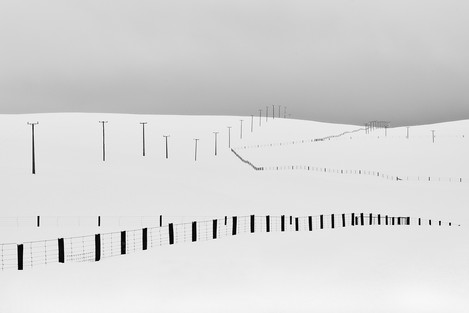
This was taken while driving on the Godley Peaks back road in winter. It's only after a very heavy snow fall like this that the landscape becomes very clean and white. Only the man-made features are left visible, creating patterns and shapes that suggest the landscape beneath.
Canon 5D Mark IV, Canon EF 100-400mm f/4.5-5.6 L IS II USM @ 188mm
1/320 sec, f/11, ISO 320
That book was full on in colour and highly emotive in its landscape subjects.
With our move two hours further north into the intermountain basin of the Mackenzie near Mt Cook and in the heart of the Southern Alps, the landscape changed as did my response to it.In this part of the country, even though it still contained exceptional natural landscapes, it has been hugely modified to produce hydroelectricity. Man's influence on the landscape here is obvious and almost unavoidable photographically. I decided to embrace this and to make the transformation of the land and man's influence on it the subject of the photographs. Monochrome was the only medium that gave the photographs the feeling I wanted.
At first glance, these man-made objects are totally incongruous to the landscapes in which they sit. Canals have been etched into and onto the valleys that are so obvious that they can be seen from outer space. Power pylons march across the landscape like a revolution, their patterns and shapes are the opposite of the natural landscape in which they stride. They catch and reflect light in a totally different way and are somewhat discordant and alien (being made up of straight lines, harsh edges and highly reflective surfaces) as opposed to the soft curves and subtle textures of the natural landscape around them. Man-made lakes fill the valleys and dams stop their natural flow.
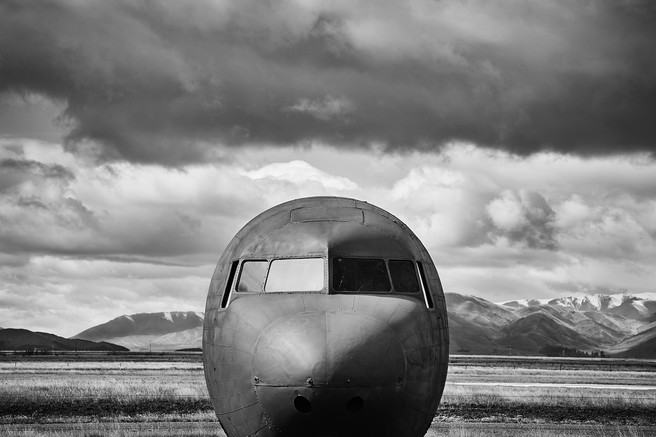
Aircraft Fuselage
Looking somewhat alien and totally out of context to any landscape, I found this angry-bird looking fuselage parked on the back of the trailer at the Pukaki airport in the Mackenzie Basin. When I made this image, it was sitting all by itself in the middle of nowhere. Not long after making this image, it was gone forever.
Canon 5D Mark IV, Canon EF 24-105mm f/4 IS II USM @ 105mm
1/200 sec, f/11, ISO 100
Through the making of this book, I have come to believe there is a visual aesthetic in here that many photographers try to avoid or totally ignore. Instead, I decided to try and let them sing in places where they have had no voice and to create a visual harmony where they appear to be discordant.
The book is already about to go into its second printing and with this comes a dilemma, as I now have many more 'Manscapes' that I want to include as well. The first printing also contained sub-series that I titled 'Vanishing landscapes', which were about man's influence on the landscape that were somewhat impermanent and were one by one disappearing without anyone really noticing. I have included just a couple of these in this selection to show what I'm talking about.
My thinking now is that I will separate this series out from 'Manscapes' and create a second book just about 'Vanishing Landscapes' and leave 'Manscapes' as a growing volume by itself that will become replenished with each new printing. In a way, this would make each printing a limited edition!
I think it's more important to keep producing and sharing than it is to conform to the normal convensions of publishing.
Most of these images, as I indicated earlier, were first realised as monochromes in camera, as I shoot both jpeg and raw. I feel that shooting monochrome in camera helps me visualise the graphic forms better and gives me a sketch pad of what was in my mind at the time of making the image. Consequently, all images have been reprocessed from the raw in Capture One 20 software as Black and White tiff files and then outputted through Photoshop for printing.
- Winter Power PylonWhat caught my eye when making this image in the Mackenzie basin, was the over-whelming dominance nature shows over what appears to be a tiny and insignificant power pylon that is none the less at least 30 metres high. It’s the black shapes of the pylon against the white mist behind, that made the image stand out.Canon 5 D Mark III, Canon EF 300mm, f/4 IS USM1/640 sec, f/8, ISO 100
-
Dunstan Range Vines
Nearing the top end of Lake Dunstan, I couldn’t help but stop to photograph these grape vines. It’s only in the early morning, when the protective fences are backlit that the silhouettes of the vines stand out against the white of the fences. The light only lasted a few minutes before disappearing altogether, making the scene a non-photograph once more.
Canon 5DS, Canon EF 100-400mm f/4.5-5.6 L IS II USM @ 56mm
1/800 sec, f/8, ISO 200
-
Aircraft Fuselage
Looking somewhat alien and totally out of context to any landscape, I found this angry-bird looking fuselage parked on the back of the trailer at the Pukaki airport in the Mackenzie Basin. When I made this image, it was sitting all by itself in the middle of nowhere. Not long after making this image it was gone forever.
Canon 5D Mark IV, Canon EF 24-105mm f/4 IS II USM @ 105mm
1/200 sec, f/11, ISO 100
-
Onslow Fishing Crib
What made this shot interesting for me, was that there was no glass in the central window frame at that time of shooting. This made the view outside just a little brighter and obvious than through the other frames. I just waited for the storm on the horizon to reach the centre of the frame to create a visual balance and interest. (The next time I visited there was new glass in the window and everything had changed).
Canon 5DS, Canon EF 28-70mm f/2.8 L USM @ 70mm
1/4 sec, f/22, ISO 100
-
New Toilets
A late afternoon visit to the end of the Tekapo-Pukaki canal, revealed two spanking new toilets that looked like a couple of alien space craft had just landed. Maybe there was a doctor inside one? It was just a matter of waiting until the angle of the sun reflected off both doors to make the shot take off.
Canon 5D Mark IV, Canon EF 24-105mm f/4 IS II USM @ 56mm
1/160sec, f/11, ISO 100
- Mt Cook from Ohau B Power Station Having previously photographed Mt Cook from all around the Mackenzie Basin, I found it very refreshing to find and make this photo of it in a way I had never seen. What attracted my eye was the very strong, metallic man-made, black structure of the dam’s gantry, which also acted as a frame around the iconic Mount Cook (New Zealand highest mountain). Canon 5D Mark IV, Canon EF 100-400mm f/4.5-5.6 L IS II USM @ 278mm 1sec, f/22, ISO 100
-
Fences & Poles
This was taken while driving on the Godley Peaks back road in winter. It’s only after a very heavy snow fall like this that the landscape becomes very clean and white. Only the man-made features are left visible, creating patterns and shapes that suggest the landscape beneath.
Canon 5D Mark IV, Canon EF 100-400mm f/4.5-5.6 L IS II USM @ 188mm
1/320 sec, f/11, ISO 320
-
Pukaki Dam Spillway
Luckily, I have a good friend in Twizel (the town we now live in) who knows things like when the dam is going to spill.It only does this when the water level in the lake is dangerously high and they need to release water in this manner so the lake doesn’t overflow for safety reasons. The rainbow was a lucky bonus.
Canon 5D Mark IV, Canon EF 24-105mm f/4 IS II USM @ 24mm
1/80 sec, f/11, ISO 100
-
Saint Bathans Blue Lake
Every time I have visited this location it has been different, not just because of the light or the weather but more so because of the changes in the landscape. This man-made valley is the result of gold mining, where the quartz rock has been washed away by high-powered sluicing guns revealing a gold seam below. Now that the gold is all gone, the valley has filled with water, forming a lake. The cliffs in the background are slowly eroding away from natural forces and will soon disappear forever.
Canon 5DS, Canon EF 70-200mm f/2.8 L USM @ 90mm
1/13 sec, f/16, ISO 100
-
Waitaki Dam Wall
This was taken looking towards the top of the Waitaki Dam during a howling nor-westerly wind, which gets funnelled through the valley from the Southern Alps. The curvature of the top of the dam wall created a great graphic curve within the frame.
Canon 5D Mark IV, Canon EF 100-400mm f/4.5-5.6 L IS II USM @ 400mm
1/1000 sec, f/8, ISO 200

